Minimalist Indoor Plants: 8 Easy Green Styling Ways
Have you noticed how minimalist indoor plants are taking over Instagram feeds and home design magazines? There’s a good reason for this trend. Clean, simple plant styling creates calm spaces that feel fresh and modern. But here’s the thing – many people make the same mistakes when adding plants to their homes.
Common problems include cramming too many plants in one spot, choosing busy planters that fight for attention, and creating messy displays that add stress instead of peace. The good news? You can avoid these issues with the right approach.
This guide shares 8 easy ways to style minimalist indoor plants that will transform your space. You’ll learn how to create clean aesthetics, reduce maintenance work, and get maximum impact from every plant you choose. Ready to turn your home into a peaceful green haven?
Table of Contents
Table of Contents
What Makes Indoor Plants Truly Minimalist
Key Characteristics of Minimalist Plant Design
Minimalist indoor plants follow three main rules that set them apart from busy, cluttered displays. First, they feature simple, clean lines paired with geometric planters. Think sleek cylinders, clean squares, or smooth spheres instead of ornate decorative pots with lots of detail.
Second, they stick to a limited color palette that focuses on greens and neutrals. This means choosing planters in white, black, gray, or natural materials like wood and concrete. The plants themselves should complement each other rather than create a rainbow of different leaf colors.
Third, minimalist plant styling emphasizes strategic placement over quantity. Instead of filling every surface with plants, you carefully choose where each one goes for the biggest visual impact. This approach creates breathing room and lets each plant shine.
Benefits of Choosing Minimalist Indoor Plants
When you embrace minimalist indoor plants, you’ll notice immediate benefits in your daily life. The first advantage is reduced visual clutter and stress. Your eyes can rest on clean, simple displays instead of scanning busy arrangements that compete for attention.
Maintenance becomes much easier, too. With fewer plants to care for, you can focus on keeping each one healthy and beautiful. This means less time spent watering, pruning, and cleaning up fallen leaves. Your plant care routine becomes something you enjoy rather than a chore.
Finally, minimalist styling enhances focus on plant beauty and natural form. When you’re not distracted by busy patterns or too many elements, you can appreciate the elegant shape of a snake plant or the gorgeous leaves of a monstera. Each plant becomes a living piece of art.
8 Easy Green Styling Ways for Minimalist Indoor Plants
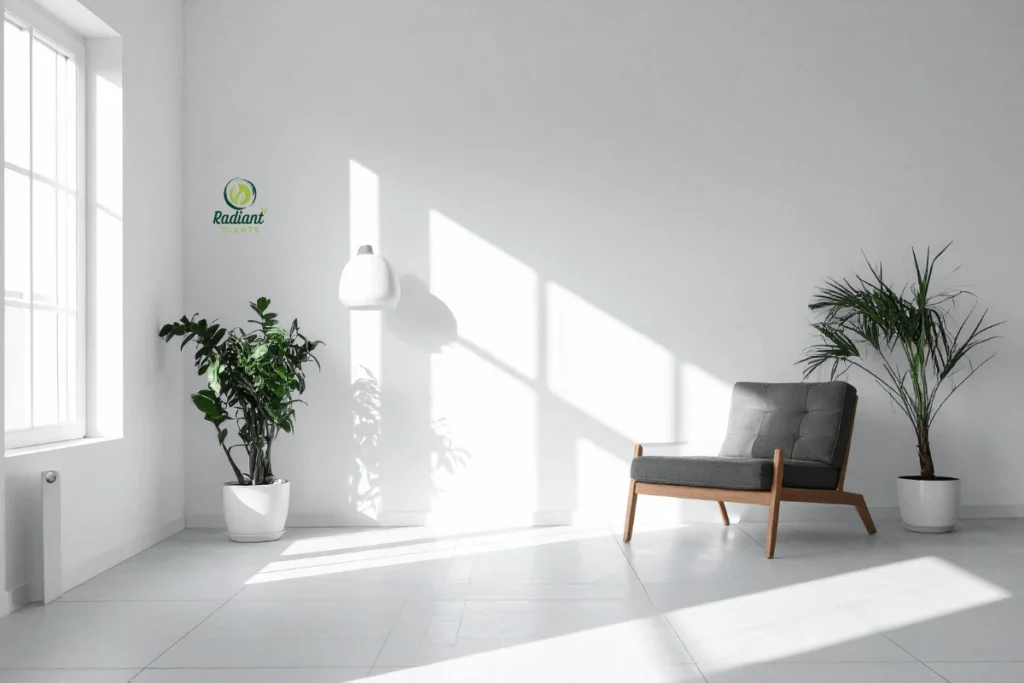
Way 1 – Choose Plants with Simple, Architectural Forms
The foundation of great minimalist indoor plants starts with choosing varieties that have clean, structured shapes. Plants with architectural forms create instant visual impact without needing lots of decoration or fussy arrangements.
Best plant varieties for clean lines:
- Snake plants (Sansevieria) with their tall, sword-like leaves
- ZZ plants (Zamioculcas zamiifolia) with glossy, symmetrical branches
- Rubber trees (Ficus elastica) with large, simple leaves
- Fiddle leaf figs (Ficus lyrata) with their distinctive broad foliage
- Monstera deliciosa with dramatic split leaves
How plant shape impacts minimalist design is crucial to understand. Plants with busy, small leaves can look messy in minimalist spaces. Instead, choose plants with larger leaves, clear patterns, or strong vertical lines. These create focal points without visual chaos.
Way 2 – Use Neutral, Geometric Planters
Your choice of planter can make or break your minimalist indoor plants display. The container should complement the plant, not compete with it for attention.
Material recommendations for minimalist planters:
Material | Best For | Why It Works |
|---|---|---|
Concrete | Large floor plants | Adds weight and stability, neutral gray color |
Ceramic | Tabletop plants | Clean finish, available in perfect whites and blacks |
Metal | Modern spaces | Sleek appearance, works with industrial decor |
Natural wood | Warm minimalist styles | Adds texture without busy patterns |
Terracotta | Desert plants | Classic shape, earthy but simple |
Size and proportion guidelines are essential for success. Your planter should be about one-third the height of your plant for balance. For wide plants, choose planters that are roughly half the width of the plant’s spread. This creates harmony between the container and the plant.
Way 3 – Create Purposeful Negative Space
One of the biggest secrets of styling minimalist indoor plants is understanding the power of empty areas. Negative space isn’t wasted space – it’s breathing room that makes your plants look more important and beautiful.
The power of empty areas in plant styling cannot be overstated. When you surround your plants with open space, they become focal points that draw the eye naturally. This is much more effective than cramming plants together where they compete for attention.
Spacing techniques for visual breathing room:
- Leave at least 3 feet between large floor plants
- Keep tabletop plants 12-18 inches apart
- Use the “triangle rule” – imagine invisible triangles between your plants
- Avoid placing plants directly next to busy furniture or artwork
- Create “plant-free zones” to balance your green areas
Way 4 – Stick to a Limited Color Palette
Successful minimalist indoor plants work within a carefully chosen color scheme. This doesn’t mean everything has to be boring – it means being intentional about your choices.
Coordinating planter colors with your existing decor creates a cohesive look. If your furniture is mostly white and wood, choose planters in these same tones. For modern spaces with black accents, black planters create seamless integration.
Green tone variations that work together include deep forest greens, bright lime greens, and silvery sage tones. The key is choosing plants with similar undertones. Avoid mixing warm yellow-greens with cool blue-greens in the same display.
Way 5 – Focus on Single Statement Pieces
Instead of filling rooms with many small plants, minimalist indoor plant styling focuses on fewer, larger specimens that make a real impact. This approach is more dramatic and easier to maintain.
Selecting one hero plant per room creates a clear focal point. Choose a plant that’s substantial enough to hold attention – think a 6-foot fiddle leaf fig in the living room or a dramatic monstera in the bedroom corner.
Positioning for maximum visual impact:
- Place statement plants in corners where they can spread naturally
- Use floor plants near seating areas where people can appreciate them up close
- Position plants near windows where natural light creates beautiful shadows
- Avoid placing large plants where they block traffic flow
- Consider the view from different angles in the room
Way 6 – Group in Odd Numbers (Rule of Three)
There’s real psychology behind why odd-number groupings look better than even numbers. Our brains find odd numbers more interesting and natural. This principle works perfectly for minimalist indoor plants.
The psychology behind odd-number groupings comes from how we process visual information. Even numbers create symmetry that can feel static, while odd numbers create gentle tension that keeps the eye engaged. Three is the magic number for most plant arrangements.
Arrangement techniques for balanced displays:
- Use plants of different heights for visual interest
- Vary the size of your planters while keeping similar styles
- Place the tallest plant in the back, the medium in the front, shortest to the side
- Maintain consistent spacing between all three plants
- Choose plants with different but complementary leaf shapes
Way 7 – Utilize Vertical Space Thoughtfully
Minimalist indoor plants don’t have to stay on the floor. Using vertical space adds dimension without cluttering surfaces, but it requires careful planning to maintain clean lines.
Wall-mounted and hanging minimalist indoor plants work best when they’re simple and architectural. Choose plants with trailing or cascading growth patterns like pothos, string of pearls, or trailing philodendrons.
Creating height without overwhelming spaces means being selective about placement. One well-placed hanging plant can be more effective than several small ones. Consider the sight lines in your room and choose spots where hanging plants enhance rather than obstruct the view.
Way 8 – Maintain Consistent Care Routines
The final key to successful minimalist indoor plants is keeping them healthy and beautiful long-term. Dead or struggling plants destroy the clean aesthetic you’re trying to create.
Keeping plants healthy for lasting minimalist appeal means establishing routines that prevent problems before they start. Check your plants weekly for signs of stress, water on a consistent schedule, and address issues quickly.
Simple maintenance schedules for minimalist plants:
Task | Frequency | Why It Matters |
|---|---|---|
Watering | Weekly check | Prevents over-underwatering |
Leaf cleaning | Monthly | Keeps foliage glossy and healthy |
Pruning | As needed | Maintains clean plant shape |
Fertilizing | Growing season only | Supports healthy growth |
Repotting | Every 2-3 years | Prevents root-bound plants |
Best Minimalist Indoor Plants for Easy Styling
Low-Maintenance Options
If you’re new to minimalist indoor plants or want varieties that practically care for themselves, these options are perfect starting points.
Snake plants, ZZ plants, and pothos varieties top the list for good reason. Snake plants (Sansevieria) can go weeks without water and tolerate low light. Their upright, sword-like leaves create perfect vertical lines in minimalist spaces.
ZZ plants (Zamioculcas zamiifolia) have glossy, symmetrical leaves that look almost artificial – in the best way. They’re incredibly forgiving and maintain their shape with minimal care.
Pothos varieties offer trailing options for hanging displays. Golden pothos, marble queen, and neon pothos all have simple leaf shapes that work well in minimalist settings.
Care requirements and styling tips:
- Water only when the soil feels dry 2 inches down
- These plants prefer bright, indirect light, but tolerate lower light
- Wipe leaves monthly with a damp cloth for a glossy appearance
- Prune any yellowing or damaged leaves immediately
- Rotate plants weekly for even growth
Architectural Plant Choices
For more dramatic minimalist indoor plants that serve as living sculptures, consider these architectural options.
Fiddle leaf figs, rubber trees, and monstera are the celebrities of the plant world for good reason. Fiddle leaf figs (Ficus lyrata) have large, violin-shaped leaves that create instant sophistication. They work best as single statement pieces in bright corners.
Rubber trees (Ficus elastica) offer glossy, oval leaves that reflect light beautifully. They’re more forgiving than fiddle leaf figs but still create a significant visual impact.
Monstera deliciosa plants develop their characteristic split leaves as they mature, creating natural art pieces that work perfectly in minimalist settings.
How to showcase their natural form:
- Give these plants plenty of space to spread naturally
- Use simple, proportional planters that don’t compete for attention
- Position them where their silhouettes create interesting shadows
- Avoid over-pruning – let their natural shape develop
- Support climbing varieties with simple stakes or moss poles
Common Mistakes to Avoid When Styling Minimalist Indoor Plants
Overcrowding Spaces
The biggest mistake people make with minimalist indoor plants is thinking “more is better.” This approach destroys the clean, peaceful aesthetic you’re trying to create.
Signs you have too many plants:
- Surfaces feel cluttered and busy
- Plants are touching or overlapping
- You can’t easily clean around your plants
- The room feels chaotic instead of calm
- Maintenance becomes overwhelming
How to edit your plant collection requires honest assessment. Start by removing plants that are struggling or don’t fit your color scheme. Next, eliminate duplicates – you don’t need three snake plants in one room. Finally, store some plants temporarily and see how the space feels with fewer elements.
Ignoring Scale and Proportion
Another common error is choosing plants that don’t fit the size of your space or other elements in the room.
Matching plant size to room dimensions is crucial for success. A tiny succulent gets lost in a large living room, while a massive fiddle leaf fig overwhelms a small bedroom. Consider the ceiling height, furniture scale, and walking paths when selecting minimalist indoor plants.
Balancing large and small elements creates visual harmony. If you have a large statement plant, balance it with smaller accessories or furniture pieces. If your furniture is substantial, your plants should be proportionally sized to hold their own.
Room-by-Room Minimalist Plant Styling Guide
Living Room Minimalist Indoor Plants
Your living room is the perfect place to showcase larger, architectural plants that create dramatic focal points.
Corner placement strategies:
- Use empty corners for floor plants that can spread naturally
- Choose plants tall enough to fill vertical space without touching the ceiling
- Ensure adequate light from nearby windows
- Leave enough space for the plant to grow and for easy maintenance access
Coffee table and side table options work best when they’re simple and don’t interfere with the furniture’s function. Small snake plants, ZZ plants, or trailing pothos in simple planters complement most living room styles.
Bedroom Green Styling
Bedrooms benefit from minimalist indoor plants that purify air and create a calming atmosphere for better sleep.
Air-purifying plants for better sleep:
- Snake plants release oxygen at night
- Peace lilies remove common household toxins
- Spider plants are excellent air purifiers
- Aloe vera plants improve air quality and are easy to care for
Nightstand and dresser arrangements should be simple and not interfere with daily routines. Choose plants that don’t need frequent watering or maintenance. Avoid plants with strong fragrances that might disturb sleep.
Kitchen and Bathroom Applications
These rooms present unique challenges but offer great opportunities for minimalist indoor plants that thrive in humidity.
Humidity-loving minimalist options:
- Boston ferns for hanging displays
- Pothos varieties for trailing from shelves
- ZZ plants for counter spaces
- Air plants for minimal-maintenance displays
Space-saving techniques are essential in these functional rooms. Use wall-mounted planters, hanging displays, or corner shelves to keep plants out of work areas while still enjoying their benefits.
Maintenance Tips for Long-Term Success
Watering Schedules That Work
Consistent watering is crucial for maintaining the health and appearance of your minimalist indoor plants.
Preventing overwatering in minimalist setups:
- Check soil moisture with your finger before watering
- Water thoroughly but infrequently rather than little and often
- Ensure all planters have drainage holes
- Use a moisture meter for accuracy
- Adjust watering frequency based on season and plant needs
Tools for consistent care include a watering can with a long spout, a moisture meter, and a spray bottle for misting. Having the right tools makes maintenance easier and more effective.
Pruning and Grooming for Clean Lines
Maintaining the architectural shape of your plants is essential for the minimalist aesthetic.
Maintaining architectural plant shapes:
- Remove dead, damaged, or yellowing leaves immediately
- Prune growth that disrupts the plant’s natural form
- Clean leaves regularly to maintain a glossy appearance
- Trim trailing plants to maintain the desired length
- Remove spent flowers to encourage continued growth
When and how to trim for minimalist appeal depends on the plant variety. Most plants benefit from light pruning in spring and summer when they’re actively growing. Always use clean, sharp scissors or pruning shears to prevent damage.
10 Easy + Underrated Indoor Plants 🌿
Frequently Asked Questions
How many minimalist indoor plants should I have in one room?
For minimalist styling, less is more. Start with one statement plant per room, then add 1-2 smaller plants only if the space feels balanced. The goal is creating focal points, not filling every surface.
What’s the best planter color for minimalist indoor plants?
Neutral colors work best – white, black, gray, and natural materials like concrete or wood. These colors let your plants be the star while complementing most decor styles.
Can I use colorful plants in minimalist design?
Yes, but choose plants with interesting foliage rather than bright flowers. Plants like rubber trees with burgundy leaves or silver pothos varieties add subtle color while maintaining clean lines.
How do I know if my minimalist indoor plants are getting enough light?
Most minimalist plant varieties prefer bright, indirect light. If leaves are yellowing or growth is sparse, they may need more light. If leaves are burning or browning, they may be getting too much direct sun.
What’s the biggest mistake people make with minimalist indoor plants?
Overcrowding spaces is the most common error. People think they need many plants to create impact, but one well-placed, healthy plant is much more effective than several struggling ones.
Conclusion
These 8 easy green styling ways will transform how you think about minimalist indoor plants. Remember to choose architectural plant forms, use neutral planters, create purposeful negative space, and maintain consistent care routines. Focus on single statement pieces, group in odd numbers, utilize vertical space thoughtfully, and stick to a limited color palette.
The beauty of minimalist plant styling is that you can start small and build confidence over time. You don’t need to redesign your entire home at once. Begin with one technique that appeals to you most – perhaps choosing a single statement plant for your living room or switching to neutral planters for your existing plants.
Ready to create your peaceful green sanctuary? Pick one minimalist indoor plant technique from this guide and try it this week. Your space will thank you for the calm, clean beauty that only thoughtful plant styling can provide. Start your minimalist plant journey today and discover how less really can be more.

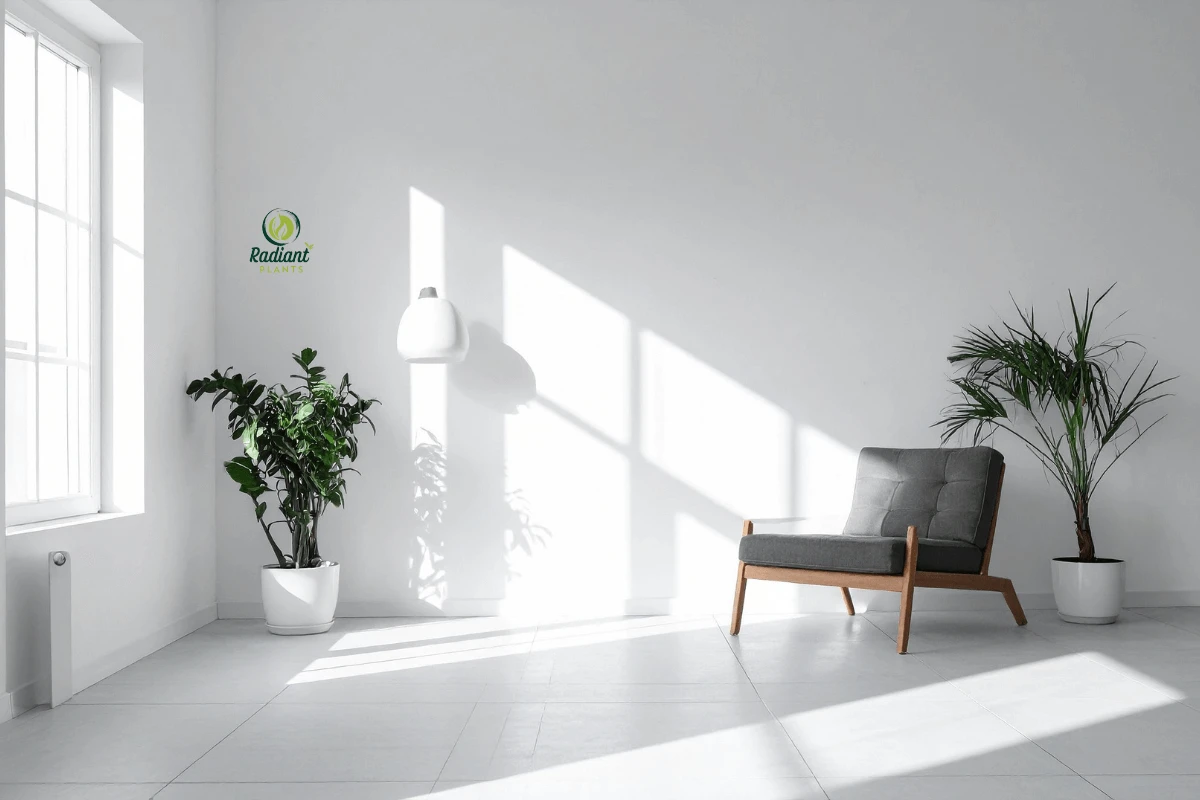
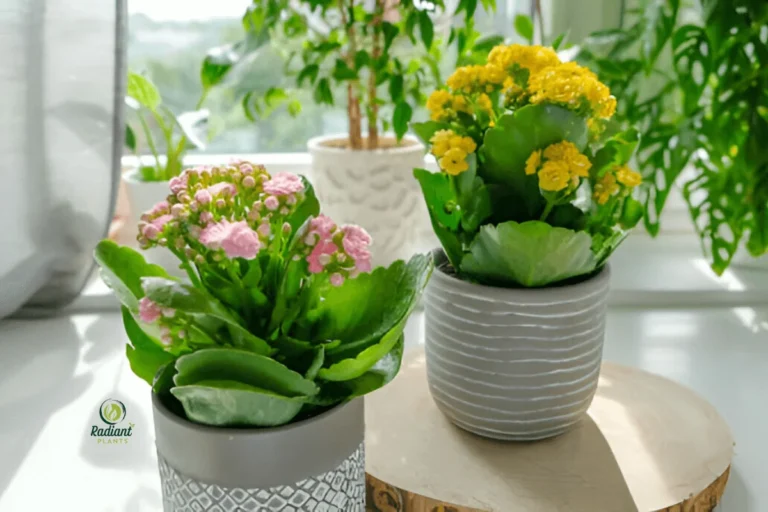
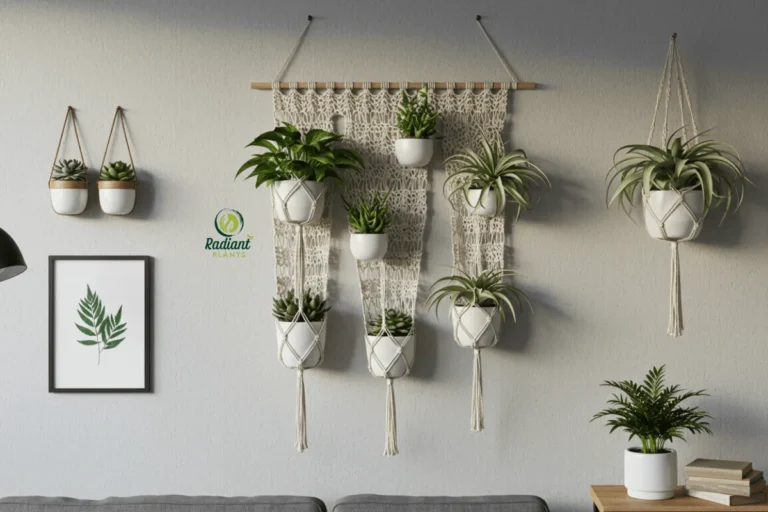

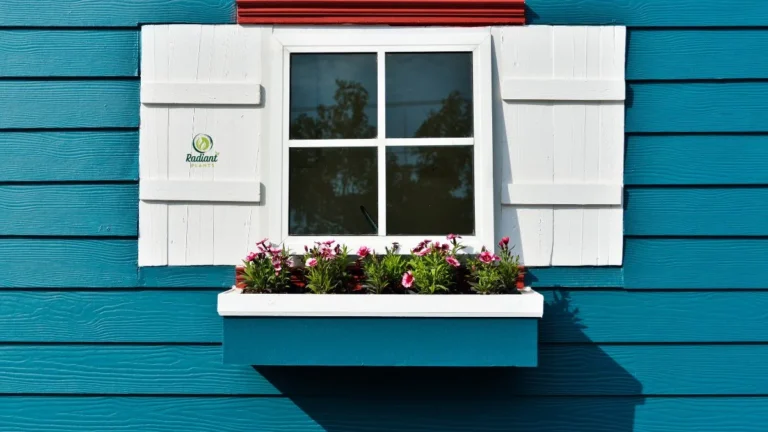
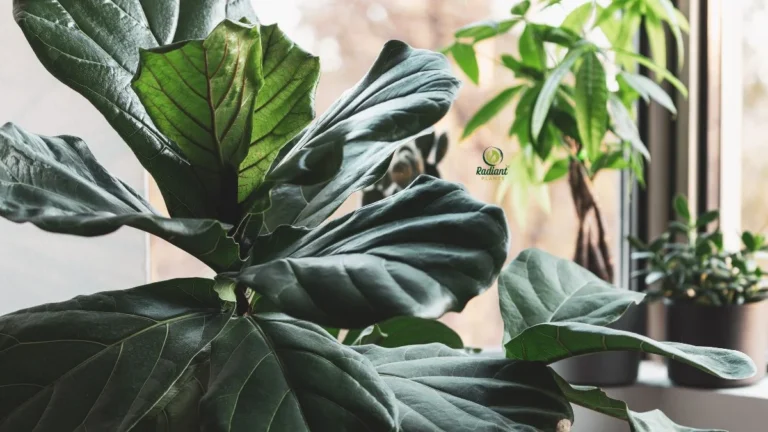
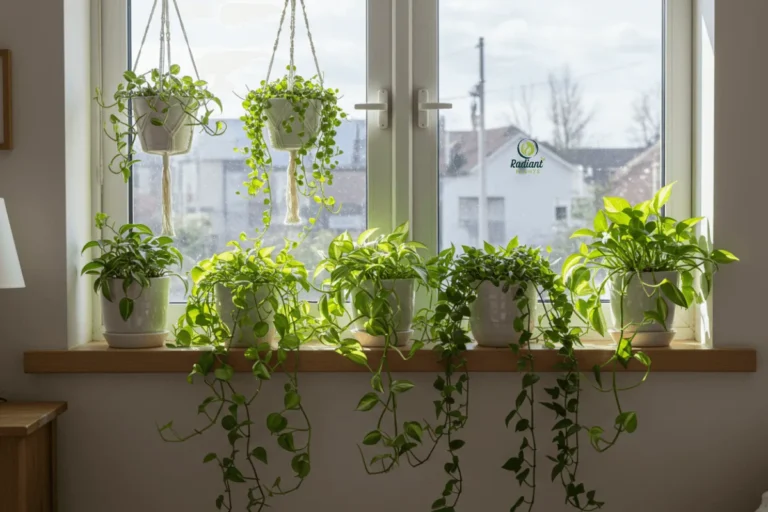
Thanks for sharing. I read many of your blog posts, cool, your blog is very good.